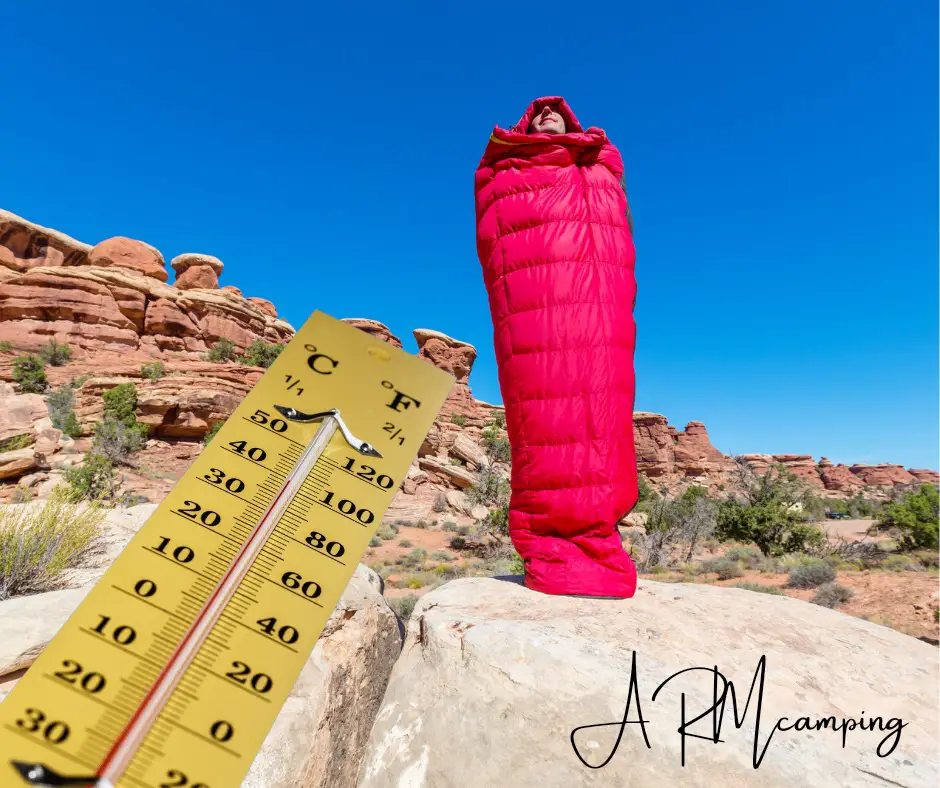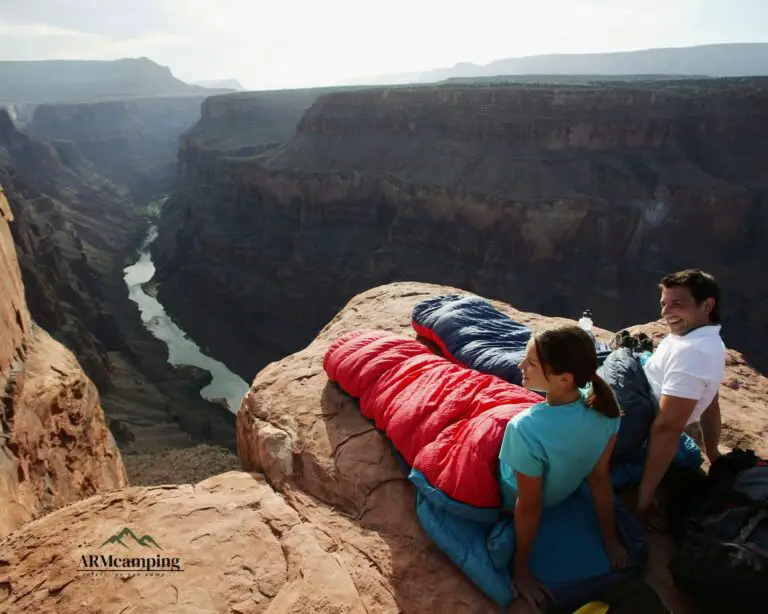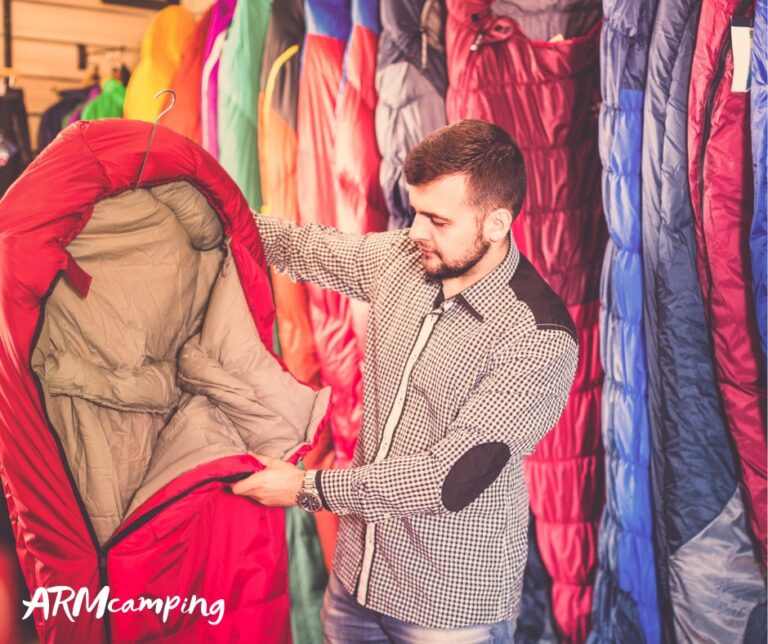
Choosing the Best Sleeping Bag for Alaska
Table of Contents
The best temperature sleeping bag for Alaska is a cold weather bag. The most important thing to consider when choosing a sleeping bag is insulation, especially when you are planning to camp in the extreme cold of Alaska.
For most people, the temperature rating of a sleeping bag is an estimate of how cold it will get at its lowest setting, as determined by the manufacturer. If your body gets too cold while you’re asleep, you may wake up and shiver.
When choosing a sleeping bag, you should keep in mind that all temperature ratings are based on an average body temperature of 20 degrees Fahrenheit and above. You’ll want to choose a rating that’s appropriate for both your weight and the amount of clothing worn while sleeping.
The ideal temperature range in Alaska is between 60 to 90 degrees Fahrenheit. If it’s below freezing outside and you’re not wearing any clothing or bedding inside your tent or shelter at night, then you will probably want to choose a 3-season bag with an EN rating of at least 20F/32F or up (depending on how much insulation you are using).
What Is the Best Temperature Sleeping Bag for Alaska’s Summer
The best temperature sleeping bag for Alaska in the summer is a down bag. Down bags are lightweight and compressible, which makes them ideal for traveling and packing in your luggage. They also have superior thermal properties, which makes them more efficient at keeping you warm than synthetic bags.
Down bags come in different levels of warmth, so you can choose one that matches your needs. If you’re not sure what type to get, start with a 32F ultralight bag for backpacking as it will keep you warm while still being lightweight and compressible enough to travel with, and for your car camping which weight isn’t an issue, you can go up to 20F.
What Is the Best Temperature Sleeping Bag for Alaska in June
The best temperature sleeping bag for Alaska in June is a 30F down bag since it will keep you comfortable even when temperatures drop well below freezing at night. It will also be a good choice if you plan on camping during the day because it’s light enough to carry around with ease but still keeps you warm enough when temperatures drop overnight (or early morning hours).
And don’t forget…
In Alaska, the weather can change at any moment. The temperature can drop from 60 degrees to 20 degrees in a matter of minutes, and it’s not uncommon for temperatures to dip below zero. It’s also important to know that Alaska is one of the windiest states in America, so you’ll want to make sure your sleeping bag is designed to stand up to high winds and cold temperatures.
To Make Sure You Get the Best Sleeping Bag for Alaska, Consider These Three Factors:
- -Weight: You’re going to want a sleeping bag that’s lightweight enough for backpacking but still warm enough for alpine areas and cold nights.
- -Temperature Rating: You’ll need a sleeping bag with a high rating for alpine areas and cold nights but also one that won’t overheat you when it gets hot outside.
- -Windproof: You’ll need a sleeping bag that will keep you warm even if it’s windy out!
Alaska Has a Variety of Climate Zones, Depending on Where You Are in The State
If you’re traveling through Denali National Park, for example, you’ll need to be prepared for temperatures ranging from -3° F to 14.5° F in the winter to 41.9° F to 64.2° F in the summer. The best temperature sleeping bag for Alaska depends on your comfort level and whether you want to move around while sleeping.
There are several factors that affect how warm or cold you feel at night—including how much insulation is in your sleeping bag, how tightly packed it is, and how much air space there is between your body and the bag’s outer lining.
But if you’re camping in Seward or Homer, you might want to consider a sleeping bag that keeps you cool—temps can get up to 80°F. If you plan to camp along the coast, even during the summer, it’ll help to have a sleeping bag with some breathability built into it.
A Little Know-How Helps You Choose the Best Temperature Sleeping Bag for Alaska
Choosing the right sleeping bag for Alaska can be a little tricky. You want to make sure that you have a sleeping bag that is warm enough for your trip, but also comfortable and affordable.
Here are some things to keep in mind when choosing a sleeping bag:
- How long will you be camping? If it’s less than two weeks, then you probably don’t need a sleeping bag that is rated below 20 degrees F. If it’s more than two weeks, then you should consider buying one that is rated below 40 degrees F.
- What kind of activities will you be doing while camping? If you plan on hiking or spending time outside, then it’s important to have a warm sleeping bag because it will help prevent hypothermia.
- Are there any special features that could come in handy? For example, if your backpack doesn’t have a lot of pockets then it might be good to get one with additional pockets so you can store items like cameras away from your body where they won’t get too cold or wet from perspiration during the night when temperatures drop lower than expected (which happens often).
When it comes to sleeping bags, temperature ratings can vary by manufacturer, but they’re a good starting point for choosing the best bag for your trip.
Northern Region of The State Experience Freezing Temperatures Most of The Year
The best temperature sleeping bag for Alaska will depend on where you’re going, how cold it gets in that region of the state, and how much you want to spend on your sleeping bag.
Northern regions of the state experience freezing temperatures most of the year. If you plan to camp in these areas, you’ll want to make sure that your sleeping bag can keep you warm enough. However, if you’re mainly planning on staying in towns and cities during your trip, then a warmer sleeping bag won’t be necessary.
The Best Temperature Sleeping Bags for Alaska Include:
The Kelty Cosmic Down 20 Sleeping Bag is designed specifically for cold weather camping (down fill insulation). It has an integrated pillow pocket and a durable shell material (100% nylon ripstop). This bag is available in three different sizes: short (66″), regular (72″), and long (80″). The short size weighs 2 pounds, the regular size weighs 2.5 pounds, and the long size weighs 3 pounds. The short size costs around $125; the regular size costs around $150; and the long size costs around $165.
The Specific Needs of Your Trip Will Largely Determine Your Sleeping Bag Choice
If you’re going on a trip where you’ll be camping in the summer, it’s best to go with a sleeping bag that’s rated for warmer temperatures. But if you’re going on a winter trip to Alaska and need a sleeping bag that will keep you warm even in subzero weather, you’ll want to get one that’s rated for colder temperatures.
For instance, if you’re going to a high-altitude campground in Denali National Park and plan to camp during the summer months (which are considered the “dry” season), then you’ll want a lightweight down sleeping bag that can keep you warm even when it’s wet outside.
Lastly…
Determine the Trip’s Purpose and Where You’ll Be Sleeping
When you’re planning a trip to Alaska, it’s important to think about where you’ll be sleeping. This will help you determine what kind of sleeping bag is best for your trip. If you plan on camping in a tent, then a mummy-style bag will work best because it will keep you warm even if the temperature drops below freezing.
However, if you plan on staying in a cabin or hotel and don’t want to haul around camping equipment with you, then a rectangular bag would be best because it can be folded up to take up less space.







